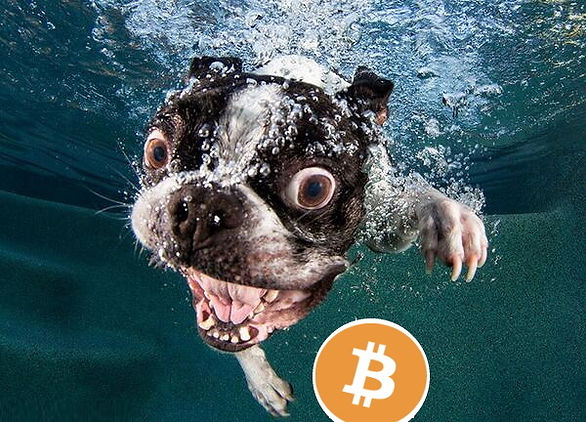These here are crazy times

Crazy times give crazy outcomes
With all the shenanigans going on amidst COVID19 and the lockdowns, it is hard to tell where the truth lies. Judging by Facebook posts and the almost-reliable Washington Post, one in five people have taken to coping mechanisms such as excess alcohol or adopting wild conspiracy theories.
So far, there have been no concrete links between 5G, chemtrails, Bill Gates, vaccines and the novel cornonavirus. A lack of facts hasn’t stopped some people from blaming the virus on their favourite bogeyman.
Despite being slow to adopt the advice of medical professionals, and occasionally promising the virus would disappear “like magic”, the non-presidential Trump has blamed the Chinese, and the World Health Organisation (WHO) instead of his own bad decisions. The Don’s cult-like followers have been quick to shift blame as well. Those who have been long against their chosen bugbear have been quick to provide sketchy ‘evidence’ that the thing which they always hated, now causes COVID19.
It has become so hard to tell the truth from the falsehoods that many social media platforms have had to ban the worst offenders. Facebook, Twitter and YouTube have taken down, blocked or “fact-checked” countless articles and thousands of questionable videos from unverified or unqualified self-proclaimed “experts”. Unsurprisingly, the pandemic has been suddenly linked to the very thing which the propagandist has been speaking out against for years (although the ‘experts’ significantly never claimed that the evil bogeyman caused viruses until after the event occurred).
It is quite notable that amongst all the pandemic propaganda of April 2020, the US Pentagon released officially verified footage of UFO’s, and nobody really paid any attention. It is as if our species has become numb to all forms of news, from any source, however formerly reliable they were.
Meanwhile (quarantine-while), news from cryptopia

Back in late 2019, long before there was even a scent of a virus, cryptopians were looking forward to news of the “halvening”. In May 2020, the bitcoin mining reward will be cut in half, an event which occurs around every four years. Legendary bitcoin creator, Satoshi Nakamoto, knew many things, among them Mohr’s Law and the value of real money.
Technically, computing power doubles every couple of years, which is why a $299 smartphone has more computational power than the first PC, which in turn had more computing power than the NASA scientists who planned the moon landing. To remain relevant as a source of value, bitcoin had to have regular inbuilt doubling of effort or halving of rewards.
We have heard anecdotal stories of an 1850’s farmer who kicked a rock and found a nugget of gold large enough to retire on. Over time, gold nearest the surface was taken, and miners needed to dig deeper and deeper holes. This meant larger investments of capital, greater scarcity and a corresponding increase in the value of gold.
If scarcity adds value to collectors and utilisers alike, then one would expect the value of bitcoin to double after each halvening event. Gold has a 5000-year history of scarcity driving price. As cryptocurrencies are barely a decade old, we have only seen two prior halvenings. After each one, the price of bitcoin did indeed double; although, it took from six to eleven months for this to occur.
During 2020, it cost around $3000 just in electricity to mine a single bitcoin; not counting the cost of hardware or web access. This may explain why, in its classic 2017-2018 plunge from $20 000, the price did not go under $3000, as miners were unwilling to sell for a loss. From May 2020’s halvening, each bitcoin will cost over $6000 to mine. This does not necessarily guarantee that bitcoin will approach a double of its current value, but it does indicate that a new floor price will be established.
What about the broader economy?

Global lockdowns have impacted millions of industries, with massive unemployment, and faltering world economies. Australia will likely have its first recession in thirty years, China’s GDP has dropped to its lowest level since 1990, and Europe continues to bleed value.
The USA, who lead the world into the first Global Financial Crisis (GFC1), has tried to counter GFC2 the same way it dealt with the previous debt-fuelled issue: by printing truckloads of paper currency. Currently borrowing up to 100% of GDP, and printing a Trillion dollars a day for the repo market alone, it seems that the USA is spiralling out of control, with many other countries echoing the disastrous ‘recovery’ plan.
Any householder will know that “you can’t borrow your way out of debt”, and most will know that printing vast quantities of money will lead to hyperinflation. It seems that the highly-educated economists of the US Federal Reserve have not heard of, or learned nothing from, similar fiscal frenzies in Germany, Zimbabwe and Venezuela.
As central banks print what they themselves have called an “infinite supply” of paper currency, it is hardly surprising to see that scarce commodities such as gold and bitcoin have climbed in value. When we see a gold price lift up over 30% in one year, we start to question whether the gold itself has become more valuable, or whether the USD it is measured in, has shrunk.
A man who was 67 inches last week and becomes 175 centimetres this week has not actually increased in height; it is just that the unit of measurement has become smaller. Bear that in mind as we see “price increases” in other assets, as well as the fact that the Fed is using its increasingly worthless monopoly money to buy up local stocks and bonds. The charts may look impressive, and new record highs may seem to be emerging, until a wise or honest economist produces a chart which is ‘adjusted for inflation’.
It is arguable that, without the advent of COVID19, national lockdowns and stimulus printing of paper currency, that the price of bitcoin and gold would still have increased. This would merely be a function of scarcity; now it is scarcity and panic.
What is interesting to note, is that, back before December 2019, in the absence of a COVID19 outbreak, there were still cracks starting to appear in the global economy. Hundreds of retailers were closing their stores, blaming Amazon, eBay or other online sources for their losses. Debt levels in the USA were already at levels which the IMF called “unsustainable” long before the pandemic.
Government policies which bailed out huge corporations during GFC1 possibly did more harm than good: instead of allowing faulty conglomerates to go bankrupt, the burden was shifted to the taxpayer, and the debt has never been repaid. It is interesting to note that when GFC1 almost took out the global banking system, USA had junk housing bonds worth around $600 billion and debt to the Fed was at 5%. A decade after the GFC, the junk bonds now include a staggering 300% growth (thanks mostly to unpayable student loans) and the debt to the Fed has increased by 400%. This does not include debts to foreign powers (currently over $1.6 Trillion to China alone).
Is there a solution to fix the problems?

There could be a solution for the woes of the USA and the broader world markets. Although some solutions may be inelegant or painful, they could work.
If a staggeringly high debt did not tumble the USA’s house of cards in 2008, perhaps a quadrupling of the debt in 2020 will see it all unfold. Of course, the US government could be brave enough to
-
declare themselves bankrupt (an unlikely event, given the ego of the Salesman in Chief),
-
reset the economy (allowing the highly indebted companies to fail without bail; again, unlikely, as the mega-corporations which pay the least taxes, give the most political funding), or
-
revalue the US dollar
A revaluation of the USD could see the re-use of what Franklin D. Roosevelt called Executive Order 6102 (most other people referred to it as “the great gold confiscation of 1933”). Enacted during the period of the Great Depression, the USA passed a law forbidding private citizens to hold gold (churches and museums could still hold gold artefacts of cultural or religious significance).
Under heavy penalty, citizens were forced to sell their gold to the US government for $20 per ounce. The government melted the gold into bars and stored them at the newly created Fort Knox. Two years later, the government repriced the gold at $35/ounce and allowed the citizens to buy it back.
Those who lived through the gold confiscation (and saw their dollars devalue by 40%) would be forgiven for a lack of trust in their leaders. Having one of your most precious assets seized and then sold back to you at almost twice the price is a special kind of thievery; one which could be called extortion and punished with imprisonment if the crime was committed by an individual and not a government.
A little-known side episode to the drama is that Executive Order 6102 was followed by Executive Order 6814 one year later, in which citizens were also forced to surrender their silver holdings to the US government. The second confiscation barely made the news, in the same way that if you had been shot three times in the belly and then someone stepped on your toe, you would hardly notice the second pain.
Citizens must understand that the government can do whatever it likes, in order to retain its power. You may think yourself fortunate to not live in a dictatorship where armed forces do not fire upon protesting citizens, but those who retain their lives could still lose their livelihoods. One more piece of bad news before it all gets better:
“Confiscation all comes down to this: the government makes the rules, changes the rules, and enforces the rules. Though it lacks the moral right, it can create legal authority. Though it lacks the constitutional empowerment, it can turn a blind eye to the Constitution… The Constitution did not stop the government from taking people’s gold in 1933.” Mike Maloney, A Guide to Investing in Gold & Silver.
Yes, the government can and will take your hard assets, if it deems it is in the interest of national security (the security of its finances, not just the security of its borders or citizens). Yes, the US government confiscated gold and silver in 1933 and 1934. The Australian government passed the Reserve Banking Act of 1959 which stated that “All gold (except wrought gold and coins…) had to be delivered to the Reserve Bank of Australia within one month of its coming into a person’s possession.” This ban on owning private gold was repealed 17 years later. Great Britain had their own gold ban in 1966, confiscating any private holdings until the law was lifted in 1979.
There have been similar gold seizures or gold bans in Italy (1935), Germany (1939), Iraq (Saddam Hussein), Cuba (Fidel Castro), Russia (ongoing) and India (ongoing). But there are some ways around the rules.
What’s the solution?

When a government is facing bankruptcy or hyperinflation, they can reset the currency by (stealing) seizing assets from their own citizens. Sometimes there may be steps which you can take, to help ensure your treasures may not be taken.
-
The Elizabeth Excuse: Elizabeth Taylor loved jewellery, and her collection was valued at over US$156 Million after her death. Despite their being bans on holding gold and silver during her lifetime, plus bans on how much cash she could carry across international borders, Ms Taylor would adorn herself with hundreds of thousands of dollars worth of assets and simply sail through customs, with “nothing to declare”. Jewellery could be readily bought and sold in one of the many countries where she visited or lived, including USA, UK, Switzerland and the Middle East.
-
The Papal Paradox: despite ostensibly being set up to help the poor, the churches of the world hold staggering amounts of assets. Whilst it may not be in your purview to start your own religion, it is possible to hold precious metals in the form of coins, medallions or icons which could be argued to have ‘religious significance’. Just as no civilised government would confiscate the Pope’s golden staff, you may find an exemption for gold crosses, silver or gold coins which feature the image of a saint, or small statues of holy people wrought from precious metals.
-
The Artistic Advantage: some treasures are widely acknowledged to be beyond even governments’ reach. These may include collectible classic artworks (rolled up oil paintings are easiest to transport through customs) or even precious antique items. These suffer the fate of being valued subjectively (is a Manet worth more than a Monet? How many Jackson Pollacks to a Van Gogh?) but are OK in a pinch. (Be aware that the authentic Tutankhamen gold death mask may be seized by Egyptian authorities as a cultural relic, but you could probably have a duplicate one made and get away with it under The Papal Paradox if you swore that the cult of Amen-Ra was your chosen belief system).
-
The Cryptocurrency Cashola: it can be exceedingly difficult for a government (whether civil or corrupt) to seize your assets if they cannot find them. Some cryptocurrencies can be hidden by deleting your phone apps and computer browser history (so long as you keep a backup of your passwords or seed phrases on a USB or secure paper). Cryptocurrencies can be used across borders and moved from place to place invisibly. Some, such as bitcoin, which are in limited supply, have the advantage of being a hedge against the inflation which is bound to occur after government seizures, bank bailouts or fiscal stimulus packages.
[Legal Disclaimer: We are not advising anyone to break the law. We are merely providing an educational service. What you do with your own investments when your government declares you a possible enemy asset, is entirely between you and God.]

When Rome is burning, buy mortar, not water
When a government is stacking debt, going broke or waving suggestively to the IMF, do not be a hero. It is not up to you to rescue the fools who made foolish decisions. You do not need to invest into government bonds or buy urban infrastructure (unless you relay want to do so). Your best bet is to stay the hell out of the way. When the embers of an empire finally extinguish, either by a rescue package from a foreign power, or on their own, from lack of fuel, know this: someone will try to rebuild. This is when you can safely re-emerge and showcase your building blocks for the new empire.
If you had managed to use the Elizabeth Excuse, or the Papal Paradox during 1933-1935, you would have seen your assets double in value within two years, whilst others lost 40-50% of their life savings. Now that you can use digital assets as an inflationary hedge (if not an Artistic Advantage: I am not sure that Crypto-Kitties count as collectable artworks), things may look brighter for your future.
Long-term readers will know that, aside from being invisible to prying eyes, cryptocurrencies have another advantage over jewellery and art, in that they can be almost endlessly divisible and still carry value. One two-hundredth of a dollar is no longer a ha-penny and no more valuable than a rounding error; one two-hundredth of a bitcoin could still buy you lunch.

How did we go this month?
As central banks go into overdrive, and devalue their paper currency, and with the upcoming halvening event of bitcoin, it is hardly surprising that the godfather of all cryptocurrencies has soared. This has lead to a widespread increase in other cryptocurrencies (“alt-coins”), in what John F. Kennedy described as “a rising tide floats all boats”. (Although attributed to JFK who was first to use the phrase in USA in 1963, the phrase had been in use in China since the 1600’s).
We have seen bitcoin rise over 33% in a month, Ethereum up 47% and ChainLink up 67%. There are many alt-coins and smaller projects who have stacked on more gains, and some of them may not keep them.
To follow JFK’s tidal analogy, investment great Warren Buffett stated, “you can’t see who is swimming naked until the tide goes out”. When bitcoin crashed in 2017-2018, it shed around 70% of its value. Some other coins dropped over 99% and hundreds of altcoins never recovered, wiping out millions of investor dollars in the process.
As in the past, we recommend that you “DYOR” (Do Your Own Research) and use the “C.O.I.N.” system from Cryllionaire.com so that you are not left with your unmentionables uncovered when the tide turns.
BostonCoin results for April-May 2020:
Bitcoin 105%
Basic Attention 107%
Binance Coin 164%
Celsius Network 311%
ChainLink 357%
We are currently reviewing our portfolio, and may take profits on some coins if we see better opportunities elsewhere. Investing is a marathon, not a sprint, and it is important to re-evaluate your position at each milestone. Just because a coin may have quadrupled in price thus far, does not mean that it will do it again, and does not mean it will stay a winner. There may be another coin-tender waiting in the wings, desperate to become top dog. Stay safe. See you next month.
[For those who came in late: if this is your first BostonCoin news update, please feel free to go back through the archives and have a look at previous issues. We aim to entertain as well as inform, so you may find some great puppy puns even as you expand your knowledge of investments and cryptocurrency.
We understand that reiterating past history of government near-bankruptcies, gold confiscations or asset seizure may be disturbing news for some. We wish to alert you of possibilities so you can take appropriate action in time before things occur. If nothing happens, you’ll be OK, but if something does, you’ll also be OK (provided you took action on the intel).
In all probability, nobody warned you that interest rates would plummet to their lowest levels in 200 years in the USA, or turn negative in several countries. Probably nobody warned you about cash bans, bank bail-outs, or bank bail-ins. All of these events have occurred in the past several months; many of them occurred quietly before the pandemic.
A recurrence of hyperinflation or another asset seizure which sees life savings slide 30-40% within a few months, could well occur just as easily as what you have already witnessed. A dollar devaluation event is not outside the realms of possibility any more than negative interest rates in the USA or a second Trump victory.
Please may we draw your attention to BostonCoin update from September 2019, where, long before COVID19 was even invented, we forecast #GFC2 and a colossal drop in the world economy, which would be bad news for most, but good news for cryptophiles. You heard it here first, six months ahead of time.
We are human and we do not always get it right, but we also have access to excellent sources of economic experience, historical data and expert opinions. We have learned that, whilst history may not repeat, it has a habit of echoing. Be assured that we will always do our level best to warn you of upcoming events, assist you with your education, and enrich your mind with nuggets of wisdom even as BostonCoin aims to enrich you financially. We are always here to serve you.]
BOS NAV at 30/04/2020
26.8194426
BOS price 29.5013868
